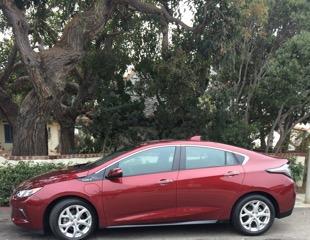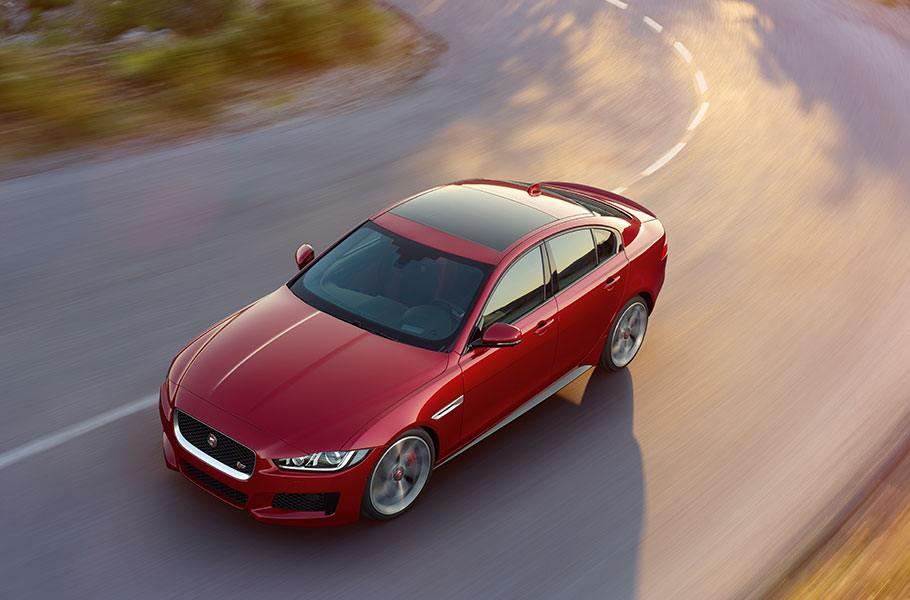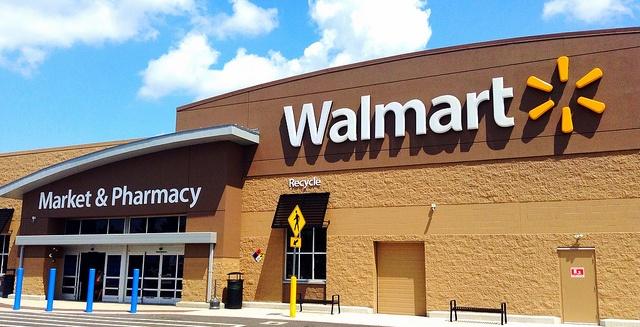Justin Trudeau, Prime Minister of Canada, to address GLOBE 2016 Leadership Summit


Justin Trudeau, Prime Minister of Canada, is scheduled to give the opening address at the GLOBE 2016 Leadership Summit to be held in Vancouver, from 2 March to 4 March. More than 2,000 thought leaders, policy makers, and financial, corporate and environment professionals and executives will meet to explore how to promote clean technologies, innovation, and sustainability into economic opportunities.
"The Prime Minister has stated that Canada will maximize the opportunities of the shift to a low-carbon economy," said Mike Gerbis, CEO of GLOBE series. "Business, NGO, and government leaders from around the world come to GLOBE to discuss how to maximize those opportunities and turn political commitments like those just made in Paris at COP 21 into solutions on the ground."
The GLOBE 2016 Leadership Summit and Innovation Exposition, held every two years in Vancouver, hosts business, policy, and civil society leaders working to address pressing global challenges with business and technology solutions.
GLOBE Series is a private company headquartered in Vancouver, Canada that works to shape global, regional, and industry agendas for a sustainable future.
To view the full conference program visit GLOBESeries.com, and for updates follow @GLOBE_Series and #GLOBE2016
National Schools Partnership appoints Stephen Howard LVO as new Chairman


Stephen Howard has been appointed as the Non-Executive Chairman of the National Schools Partnership, a social marketing agency responsible for the creation of learning programmes in partnership with brands and teachers.
National Schools Partnership specialises in achieving results for young people, teachers, families and clients through the power of inspirational education. The agency works in partnership with 69,000 teachers, in the U.K. and Ireland. Current programmes include Sky Academy; the British Gas ‘Generation Green’ programme; P&G ‘Always About You’; the Into Film Festival; and Lloyds Banking Group and BBC Children in Need’s ‘Champions of Change.’
CEO Mark Fawcett said: “I am very excited that Stephen will be joining us. His great experience and his equal passion and belief in the positive impact business can make in the support of education and young people, will be invaluable.”
Howard is currently Chief Executive of Business in the Community, leading 800 member organisations in tackling a wide range of issues that are essential to creating a fairer society and a more sustainable future. He has senior management expertise acquired in the corporate sector, having held a number of different executive and non-executive roles including: Chief Executive of Cookson Group plc, and Chief Executive of Novar PLC.
Howard holds a non-executive directorship for In Kind Direct; membership of the Veolia Advisory Board; Director of Big Issue Social Investments Ltd; membership of the London Enterprise Panel and the Fair Education Alliance. He has also recently been appointed Chair of Power to Change, an independent charitable trust.
Speaking of his new position as Chairman, Howard said:“I am passionate about responsible business, and delighted by the opportunity to support National Schools Partnership in achieving bigger and better impact for clients, schools and the community through the unique power of education.”
Why We're Working With Monsanto


TriplePundit Founder and Publisher Nick Aster contributed to this article
You heard that right. The TriplePundit team is very excited to be hosting an upcoming Twitter chat with special guests Hugh Grant, CEO of Monsanto, Dr. Nick Goeser, director of soil health and sustainability for the NCGA’s Soil Health Partnership, and Pradip Das, principal researcher of experimental science for the Climate Corp., to discuss the future of agriculture.
Many of you are probably wondering why we'd choose to host this chat -- especially enthusiastically. Here's why: We believe everyone deserves a seat at the table when it comes to managing climate change. Actually, we NEED everyone at the table if we're going to solve global challenges and nourish 9 billion people in a warming world. And we don't believe in bogeymen.
The arguments against monocrops like corn and soy and against excessive pesticide use are very sound from a systems-thinking point of view. These crops can be problematic both nutritionally and environmentally. Further, the changes our global agricultural systems have seen in the last century have come so quickly that it's scary to sit on the sidelines and watch. Monsanto also rightly has its critics when it comes to its aggressive approach to intellectual property (IP) protection and taking farmers to court.
But the knee-jerk reaction to Monsanto as the root of all evil is not sound thinking. Monsanto is the environmental community's favorite bad guy, and referencing the ag giant is all-too-often a way to distract or deter an argument. The recent health crisis over the Zika virus and the speed with which a rumor that Monsanto was somehow involved is the perfect example of how Monsanto-as-strawman hurts the cause of sustainability. Simply put: Blaming Monsanto for the world's ills is a lazy way to win an argument. The fact is that advanced technology, including genetic modification, may be helpful in both feeding a growing world and adapting to the effects of climate change. There are arguments to be had for and against this sentiment.
We need critical thinking to solve the worlds biggest problems, and we need everyone at the table. That includes the world's biggest agriculture giants. And you!
We invite you to join the conversation on Tuesday March 8 at 9 a.m. PST/12 p.m. EST at #Ag4thefuture. Please bring your most respectful and intelligent tweets, and you'll get a chance to engage with the CEO of Monsanto -- quite an opportunity if you think about it!
For more information, read on here.
Already active on Twitter? Tweet to spread the word about the #Ag4thefuture Twitter chat:
Join @MonsantoCo, @SoilPartners, @ClimateCorp, and @TriplePundit on 3/8/16 for a Twitter Chat on #Ag4thefuture! http://bit.ly/Ag4thefuture
Tweet us at @triplepundit, @nickaster and @jenboynton to let us know what you think, or leave responses below!
Power in the Sahara: World's Largest Solar Plant Opens in Morocco


The king of Morocco officially launched the first phase of the world's largest concentrated solar power plant, the Noor Complex. When finished, the complex will provide 500 megawatts of clean, renewable energy to 1.1 million Moroccans, reduce the country’s use of foreign oil by about 2.5 million tons, and lower carbon emissions by 760,000 tons per year.
This could herald a new era of clean energy in this part of the world. The Sahara is a huge swath of sun nearly the size of the United States. If even just a tiny percentage of it were covered with solar panels, it could generate enough power for much of North Africa, especially if coupled with adequate (and increasingly affordable) battery storage to cover the few times a year the sun isn't shining.
“The Noor Solar Complex stands to serve as an example for Africa and the world about how to create effective pathways to greener and more inclusive economies through renewable energy,” said Yacine Fal, with the African Development Bank, one of the financiers of the project, in a press statement.
This plant will be massive when completed, taking up as much space as Morocco's capitol city, Rabat. It happens to be located in one of the poorest regions of the country, and there are hopes that it will provide jobs and economic development to a region in need of it, along with, of course, power. Around 650,000 homes already get power for three hours a day from the plant.
It was not an easy project – with financing coming from numerous international agencies, governments and private investors. The fact that it got done, and is now providing energy to hundreds of thousands, is powerful. This effect will be amplified because Morocco also happens to be the host of the COP22 climate talks later this year, where the details that were agreed upon in Paris last November will be ironed out. Having a symbol of solar ingenuity and political will across the Sahara will certainly be a powerful symbol to the potential of renewable energy to help us meet ambitious global climate goals. Morocco is, in fact, a global leader, ranked one of the top 10 nations taking action against climate change in the 2016 Climate Performance Index.
"What's encouraging is that in all these areas there is a deliberate choice and clear policies that have been spelled out by the government, and they are actually walking the talk in terms of putting the resources and in terms of implementation,” said Marie-Francoise Marie-Nelly, World Bank country director for the region, in a statement.
If North Africa expands its solar production, there are even hopes that it could ship energy to nearby Europe through an integrated grid. This could allow for solar to go to Spain when its most ample renewable source (wind) is low, and vice versa, building resilience and reducing the need for fossil-fuel baseload energy.
One thing is for certain, with the opening of this plant, the future of energy in the Mediterranean is bright. Morocco is showing us all the way forward.
Image credit: Pixabay
Imagine Gas-Free Days Driving a Volt


It is day three of my Chevy Volt test drive. I have yet to use a single gallon of gasoline. That is zero gasoline consumption while driving in San Diego’s urban stop-and-go traffic. That is zero gasoline consumption while having fun blasting up highway on-ramps. That is three days of driving the way I enjoy driving while generating zero tailpipe emissions.
This second article on my Chevy Volt test-drive experience explores what this car can mean to your pocketbook.
Is the Volt the best value in the auto industry?
The Volt is not an eco car. It is a luxury car with all the bells and whistles, including fun-to-drive performance. Yet, you can find dealers selling Volts for around $33,000. That is equal to the 2016 average retail sales price for new cars. There are also dealers promoting $269/month lease deals.
Then there are the Volt’s tax credits. As an economist, I wish we did not have tax credits and deductions for fossil-fuel power plants, oil extraction, renewable energy or electric cars. This type of tax policy distorts procurement decisions. But we do have tax incentives, and the tax credits for electric cars are very generous. The federal tax credit is $7,500 for an electric vehicle like the Volt. In California there is an additional $1,500 tax credit. If you live in California, you can buy a fully-loaded $40,000 Volt like the one I am test-driving for $30,000 after tax credits. That is probably $10,000 to $30,000 less than a comparable Mercedes, Lexus or BMW.
Many insurance companies offer a 5 percent discount to electric car owners.
Volt owners can ignore gasoline prices for the overwhelming number of driving days. Most of us drive less per day than the Volt's 56-mile electric range. Some Volt owners I follow on Facebook report going a month with zero gasoline consumption.
The cost to run a Volt on electricity is lower than filling up at the pump. Utilities are increasingly offering discounted rates for electric car charging. It is estimated that the cost to recharge electric cars through utility service is equivalent to 75 cents per gallon of gasoline. Finally, there is a growing trend where homeowners buy a solar system and they buy/lease an electric vehicle that they refuel for “free” from their home’s solar system.
The financial bottom line is that a Volt saves money. It eliminates worrying over gas prices. It is the best deal you can find for a luxury car in America.
How to buy a car
Test driving the Volt has challenged my thinking. It should challenge yours. We all need to rethink how we buy cars.
It is time we learn to embrace the new technology symbolized by the Chevy Volt. Would you still buy a Nokia phone or a Palm Pilot contact manager? They were great technologies at the time. But technology has moved past them.
That is our current situation with the cars we own. We love them. But they are now obsolete. Cars like the Volt must be our future if we are to solve the big problems that confront our economy and health. The Volt is American technology made in America. Think of the jobs and economic growth if we all drove a Volt or Volt-like car. Electric cars deliver zero tailpipe emissions. They are a solution to the urban air pollution that is now recognized as the fourth leading cause of death. You won’t let your kids smoke. Why let your kids breath fossil-fuel air pollution when you can choose to drive a stunning car like the Volt?
The great news is that this American-made technology is price-competitive even without tax incentives. Vehicles like the Volt are bargains with tax incentives. They cost less to operate. Most of all, they are fun to drive. Do something for yourself and America: Go test drive a Volt.
Enough seriousness
For all of the Volt’s serious benefits, the most compelling reason to drive one is that it's a fun car to drive. Tomorrow I am driving the Volt to San Clemente’s Pier where I will bask in the Southern California sun and eat fish tacos. Then the next day, I'll drive over the mountains and down into Palm Springs. Follow along through upcoming posts profiling the fun of driving a Volt in Southern California.
Image credit: Bill Roth
Editor's Note: An earlier version of this post stated that California offers a $2,500 tax credit for hybrid EVs. It was updated on Feb. 23 to the correct number.
Jaguar Land Rover Cars Will Soon Include Recycled Aluminum


Jaguar Land Rover and Novelis developed an automotive product called RC5754 aluminum alloy that contains up to 75 percent recycled content. Both companies recently announced that RC5754 has been integrated into the production of passenger vehicles. The two companies developed it as part of Jaguar’s REALCAR (Recycled Aluminum Car) project. It was introduced initially in the new Jaguar XE but will soon be used in all new and legacy Jaguar models.
Jaguar describes the REALCAR project in its latest sustainability report as its “long-term and constantly evolving closed-loop materials model that makes use of a recycled aluminium alloy RC5754.” The project required big investments on the part of Novelis and Jaguar. Novelis invested $8.6 million in expansion of its U.K. Latchford Plant, and Jaguar invested over $8.6 million in its Press Shops for the material.
Jaguar has a goal of incorporating 75 percent recycled aluminum materials in its vehicles by 2020, and the use of RC5754 helps it accomplish that goal. The goal is part of Jaguar’s larger aim to use more sustainable materials in its vehicles. The company believes the way to accomplish that goal is through the creation of a circular economy. “We believe the circular economy is an important strategy – placing a value on waste materials so that they are reused in place of natural raw and non-renewable materials,” Jaguar stated in its sustainability report.
What exactly is a circular economy? McKinsey and Co. defines it as aiming to “eradicate waste — not just from manufacturing processes, as lean management aspires to do, but systematically, throughout the lifecycles and uses of products and their components.” Further, McKinsey states that “tight component and product cycles of use and reuse, aided by product design, help define the concept of a circular economy.”
A circular economy is “restorative and regenerative by design, and aims to keep products, components, and materials at their highest utility and value at all times,” the Ellen MacArthur Foundation adds. It is “a continuous positive development cycle that preserves and enhances natural capital, optimizes resource yields, and minimizes system risks by managing finite stocks and renewable flows.”
Closed-loop manufacturing is part of creating a circular economy, as Jaguar mentions in its sustainability report. A case study on the REALCAR project by the University of Cambridge Institute for Sustainability Leadership describes a closed-loop value chain as taking “a fundamentally non-linear approach." Implementation of it is “predicated on the notion of a circular economy, combining both forward and reverse supply chains, and where product waste is incorporated in the production of new versions of the products,” researchers said. In other words, it is a different way of manufacturing, one in which the entire lifecycle of a product and the components to manufacture it are considered. In this case, the lifecycle of a vehicle and its components are considered.
The benefits of closed-loop manufacturing can be seen by looking at the REALCAR project. The project “delivered wide-ranging benefits,” the case study states. One of those benefits is a “significant reduction” in the lifecycle impact of Jaguar’s vehicles as recycled aluminum needs up to 95 percent less energy during production than primary material does.
Less climate change impact is another benefit. The REALCAR project reduced the climate change potential of the 2013 Range Rover TDV6 model by 13.8 percent over a typical vehicle’s entire lifecycle. And it puts Jaguar closer to its goal to achieve a 30 percent reduction in key environmental impacts during a vehicle’s entire lifecycle by 2020. Novelis also benefits from the project: It helps the company make progress on its own goal to reduce absolute greenhouse gas emissions by 13 percent.
The REALCAR project is an example of what applying the concepts of circular economy and closed-loop manufacturing can achieve. It also serves as an example to other car companies: If we want to reduce climate change impacts, these are concepts that need to be widely applied. The planet and its billions of inhabitants depend on it.
Image credit: Jaguar Land Rover
Decade-Long Walmart Partnership Offers Sustainability Lessons


When the world's largest retailer teams up with one of the most outspoken non-governmental organizations, the ripple effect is felt everywhere. That's what's happened during a decade of cooperation between Walmart and the Environmental Defense Fund.
EDF recently touted the progress made during the past 10 years of this unprecedented partnership. The organization accustomed to scrutinizing big business practices decided to set up shop in Walmart's hometown of Bentonville, Arkansas, and connect from that dedicated office on a laundry list of environmental issues. The NGO concentrated first on simply seeing things from Walmart's perspective.
We asked EDF's manager of corporate partnerships, Elizabeth Sturcken, what the biggest challenge was in taking on this retail giant and its carbon footprint. She answered:
"Ten years ago, when this partnership started, Environmental Defense Fund saw that Walmart was considering how to become more sustainable. Our job was to pile on the existing motivation by showing them the positive environmental impact they could have by using their scale to improve the way business was done."I think our biggest challenge back then was where to get started. There were so many opportunities to address, and Walmart, as a business, was moving so fast – we really just grabbed on and started learning the business. Only when we were able to identify Walmart’s biggest areas of environmental impact were we able to really start driving results at scale."
Learning that 90 percent of the potential for limiting carbon emissions was in Walmart's supply chain necessitated a look at how to achieve system-wide results with all those suppiers the company collaborated with on a regular basis, Sturcken explained. Its daunting $482 billion in annual sales gives Walmart the power to influence every other business in its vast supply chain as well as to motivate competitors. EDF was impressed that, in 2005, then Walmart CEO Lee Scott was calling for more sustainability in products sold, creating zero waste and eventually using all renewable energy.
Simply put, Walmart's trio of ambitious goals were:
- To be supplied by 100 percent renewable energy
- Create zero waste
- Sell products that sustain people and the environment
One specific, ambitious, Walmart goal was to eliminate 20 million metric tons (MMT) of greenhouse gas emissions by the end of 2015. EDF reported the company not only met that goal, but exceeded it, by cutting out 28 MMT of pollution from its supply chain.
Walmart's senior director of global responsibility communications, Kevin Gardner, related: "Our journey in reaching these goals – in partnership with EDF – has enabled us to set realistic targets and milestones to track toward these goals -- and enhanced our ability to clearly quantify, track and report progress on a regular basis."
Gardner offered these ingredients for success that have helped Walmart achieve sustainability goals and that could be instrumental for other businesses looking to follow suit:
"Through this journey, our eyes were opened to a few key overarching sustainability trends that are essential for success":
- We can’t create a solution alone: "We quickly realized that driving meaningful change requires 360 collaboration and convening expert/NGO partners such as EDF for meaningful expertise along the way, suppliers to create the most efficient supply chain possible, and even competitors to create solutions to shared problems. To gain a true systems change, we must all work together to identify the root of major problems and drive new, collaborative action that spurs lasting change."
- Sustainability must make business sense: "Our work to reduce our environmental impact, like any other project, must also move the needle from a business bottom-line perspective in order for companies to engage in this work long-term. For efficiency, it involves capital decisions and staffing to execute, track and monitor projects. Walmart has been able to incorporate technologies and developments within our supply chain – from energy efficiency to reducing food waste – that have not only reduced our environmental impact, but also save us money as a company, which allows us to ensure the everyday low prices that our customers have come to expect."
- Consumers want to buy products they feel good about -- without having to pay more: "In embarking on our sustainability journey, we quickly came to realize that consumers want to feel good about the sustainability of the products they are buying – without having to pay more. Walmart is committed to reducing the environmental impact of the products we sell, at no extra cost to the customer. Through our work with EDF, we were able to form the Sustainability Consortium and to develop the Walmart Sustainability Index, ultimately leading to the launch of our online Sustainability Leaders shop – which points customers to our best-in-class sustainable products, at everyday low costs. The Index and the Sustainability Leaders shop have been instrumental in inspiring our suppliers to do right by the environment and enabling us to do right by our customers."
Furthermore in its report, EDF suggested these tips for others in the industry who want to reach sustainability goals:
- Be ambitious
- Measure to manage
- Persevere
- Engage
- Align on policy
Walmart influenced the agricultural community to achieve efficiencies in its use of fertilizer. This is especially relevant to the production of corn and other leading commodity crops. A Walmart-led initiative aims to reduce 7 MMT of greenhouse gas emissions in agriculture by the year 2020.
Walmart also spearheaded the Closed Loop Fund that encourages cities to bolster their recycling efforts, via zero-interest loans. It committed to more energy efficiencies in its factories in China.
A product as simple as a lightbulb has had a big impact because of the vast reach of a company like Walmart. In 2007, the company promoted the sale of Compact Florescent (CFL) lightbulbs, helping its customers save energy at home.
Walmart has also made progress in modernizing the standards for safer ingredients in numerous consumer products, responding in part to coalition campaigns like Mind the Store that have urged retailers to scrutinize product safety. Walmart's Sustainable Chemistry Implementation Guide led the way for even more retailers to screen ingredients more closely in their supply chains. Walmart is leading a trend toward full disclosure of product ingredients in its private-label products for Walmart and Sam's Club, while encouraging other brands to do the same.
The EDF partnership has always stressed that businesses must make sound and science-based, as well as business-based, decisions on tightening the supply chain. Of its three main goals, Walmart has certainly led the way in selling sustainable products, while reporting a 82.4 percent reduction in waste in the United States. It has the farthest to go to achieve 100 percent renewable energy, getting about a fourth of the way toward that goal by the end of 2014.
Said Walmart's Gardner: "We listened to our customers’ desire for more transparency into the products they are buying, and as a result, Walmart U.S. and Sam’s Club worked with EDF, other NGOs, suppliers, academics, government and industry stakeholders to develop our policy on sustainable chemistry for the consumable products that we sell. Our customers expect that the products they buy are safe, affordable and sustainable, and this is one way we’re delivering on those expectations."
You can see more here about the timeline of the EDF and Walmart partnership.
Image credit: Flickr/Mike Mozart
Uniqlo USA Launches Fashion Line for Muslim Women


According to the Pew Research Center, approximately 1 percent of the estimated 322 million Americans practice Islam. That translates to about 3.3 million Muslim Americans in total, and slightly less than 2 million American adults. (That number could be off, as the U.S. Census does not ask questions about religion in its decennial population count.) Despite its relatively rapid growth the past decade, this demographic -- or market -- will still be small in 2050, when estimates suggest Muslims will comprise about 2 percent of the population.
Nevertheless, it is still a market. And Muslims can be found in high concentrations in all corners of America. Witness the cities with the five largest percentages of Muslims: Detroit; Washington, D.C.; Cedar Rapids, Iowa; Philadelphia; and New York City.
So, despite all the disjointed political chatter, Muslims are part of American life and culture, and businesses have taken notice. So have some designers, who are conscious of the fact that Muslim Americans are hardly a monolithic group, from the Arab-American capitol of Dearborn, Michigan, to the Bosnian-Americans who live in and around St. Louis.
To that end, Hana Tajima, a Japanese-British fashion designer from the United Kingdom, has launched a so-called “Modest Wear Collection” with Japan-based fast-fashion retailer Uniqlo. The looks run across the map. Some of the stylish outerwear and tops are perfect for a night out in the trendy Gemmayzeh district of Beirut; the kebayas would be more comfortable for Muslim women from Southeast Asia. Tajima has also introduced a range of hijabs, which are commonplace across Northern Africa and the Levant. The collection also includes Malaysian-inspired baju kurungs and tunics, as well as blouses that Tajima says invoke modesty but would easily fit in within any women’s fashion collection. Tajima also designed a couple of hair accessories made from Uniqlo’s moisture-wicking material, which has long been part of the reason for the company’s enduring popularity in east Asia.
For now, Tajima’s collection is available online and at Uniqlo USA’s 5th Avenue flagship store in Manhattan. Uniqlo’s decision to carry such a line follows a slow but steady trend by leading fashion brands to design collections for Muslim women. Last year Tommy Hilfiger and Barcelona-based retailer Mango released Ramadan-inspired lines in the Middle East. H&M is not quite there yet, but generated buzz by featuring a 23-year-old Muslim woman from London in last fall’s ad campaign. Most Muslim Americans, however, still have to shop for their favorite designs online. Nevertheless, more clothing companies are realizing that there is opportunity worldwide: Forbes estimated that Muslims spent $266 billion on fashion in 2013.
The decision to promote Tajima’s collection is a bold one for Uniqlo, which has struggled recently with its U.S. stores. Warm weather and the consumers’ unfamiliarity with the Uniqlo brand contributed to its U.S. stores operating at a financial loss, but the company hopes a new strategy of focusing on major cities and expanded online stores can turn its American sales around. In addition to shops in Manhattan, Los Angeles and San Francisco, the company has also opened a new store in Chicago and two new locations in New York.
Image credit: Uniqlo USA
Crawl-Walk-Run: Gaining Sustainability Momentum


This is the third post in a four-part series on undertaking a sustainable sourcing business approach to innovate private store brands. Click here to view section one about the myths, risks and opportunities of sustainable sourcing, or here to learn about the Crawl Phase of a sustainable-sourcing initiative.
In the U.S., consumer awareness, the demand for more transparency and continued compression on margins are providing an opportunity for private brand owners and the industry to look at value and innovation through a different lens.
Millennials are the new majority demographic classification. This segment is very aware and fiercely loyal to brands that meet their value equation. It should be the goal of a private brand to have millennials becoming its customers for life.
When taking on a project of this magnitude, I recommend taking the Crawl-Walk-Run approach, featured in this series. Here we will examine the Walk Phase.
Gaining momentum: Walk
Establish a team
Now that you have established a track-record with some successful sustainable-sourcing initiatives, you will find it easier to get the full buy-in from other vital corporate leaders and establish in-store green champions. Formally develop your corporate team of VPs, directors and project managers from all relevant departments (perishables, marketing, legal, food safety, corporate responsibility, etc.) as private brand stewards to develop your private brand sourcing strategy.
Incentivize in-store green champions by providing special T-shirts and apparel to identify and differentiate them and by including them in monthly private brand steward meetings to ensure the goals of your sustainable-sourcing strategy are being met and measured.
Sustainable sourcing values
Once you start walking down this road, it is key to have your sustainable-sourcing values consistent throughout the private brand. Sustainably-savvy customers finding criteria in your private brand in one area of the store will expect similar or equivalent criteria to be met in the private brand products throughout the store. No customer enjoys being confused or misled.
Market demand
Consumers are exploring healthy alternatives when shopping, in response to rising obesity and growing childhood diabetes. You may find a slight increase in the cost of sustainable sourcing. But as you spread that out, the cost increase may, in fact, only be pennies per unit, while you take advantage of the opportunity to greatly expand your customer base.
Sustainable ingredients
If you already have a natural/organic private brand, this is an easy way to test consumer acceptance of more sustainably-sourced products. You can begin offering a stock-keeping unit (SKU) of fair-trade coffee, a sustainably-sourced paper product or cage-free eggs.
In the Crawl Phase, I discussed recycling. When walking, now is a good time to challenge your manufacturers to reduce packaging.
To develop your sustainable-sourcing strategy as you begin to walk, look for ways to incorporate a slight formula variation in SKUs. Instead of using conventional cocoa, switch to fair-trade cocoa. Remove palm oil from the formula, or use sustainable sources of palm oil. Identify and reduce chemicals of concern or artificial ingredients.
Customer value
As you develop new products, look for sustainable-sourcing opportunities to give your product the and factor. Who does not want to feel like they got more for their money? Offer an SKU of Omega-3 eggs … and make them cage free! Beef raised without antibiotics, a term that is becoming mainstream, and now grass-fed. Paper products made from post-consumer recycled product and Rainforest Alliance Certified. Health and beauty private brand products that are manufactured in recycled plastic packaging and Leaping Bunny Certified.
Supplier relations
Sometimes lack of supply availability does not allow you to put a policy in place for what you would like to source. For example, take cage-free eggs and responsibly-sourced palm oil as ingredients for which there may not be enough supply. Your team of private brand stewards may decide to develop positions, in lieu of policies, due to inconsistency or lack of supply.
Realize that suppliers need demand commitments. For example, there must be demand for an entire barn’s worth of cage-free eggs in order for a supplier to convert a barn from cages to cage-free. Your suppliers’ understanding of your position will increase the availability of sustainable supply over time as long as you make clear to the suppliers that you will use sustainably-sourced ingredients whenever possible.
Communication is important to make sure the positions of your private brand strategy are known to your suppliers and to the industry. Having inconsistent sustainability attributes in your private brand products many mean that you will not be able to label or market the sustainable attributes right away, but as your positions are known and as you consistently buy the sustainably-sourced ingredients, supply will increase so that you can eventually promote the sustainably-sourced attributes.
Transparency and traceability
More and more consumers are interested in transparency, wanting to know where their food comes from, which requires traceability. Work with your suppliers to ensure they have and can share ‘chain of custody’ and traceability documents. A chain of custody document is the chronological documentation of a product or ingredient through the supply chain.
The paper products industry, through the Sustainable Forestry Initiative, is practicing this today. But as an industry, there is still a lot of work to do to record and make readily available product ingredient traceability information to brand owners and consumers. It is important to keep challenging your manufacturers and suppliers and to raise the bar on packaging and ingredient standards as well as supply chain efficiency.
Customer communication
Where you can, promote your efforts through social media, point-of-sale materials in-store and messaging on your website.
After gaining momentum in the Walk Phase of sustainable sourcing, you are ready to beginning exploring the Run Phase, the topic of my next post.
Portions of this were originally published in Henry Stewart Publications 2045-855X Journal of Brand Strategy VOL. 4, NO. 2, 000–000 Summer, 2015
Image credits: 1) Flickr/Maryland Gov Pics 2) Flickr/16:9clue
Business in the Community Ireland offers Business Working Responsibly Mark


BITC Ireland has launched the Business Working Responsibly Mark, a standard that certifies responsible and sustainable business practices. The Mark is the only CSR standard in Ireland that measure all areas of business, from CSR to supply chain management, from employee well-being to environmental policies. Audited by the National Standards Authority of Ireland and based on ISO 26000, the Mark offers a credible third party endorsement of practices. Benefits include better credentials, enhanced investor relations, improved employee morale, and profile as a leading organisation in CSR. BITC Ireland has created a video for more information.